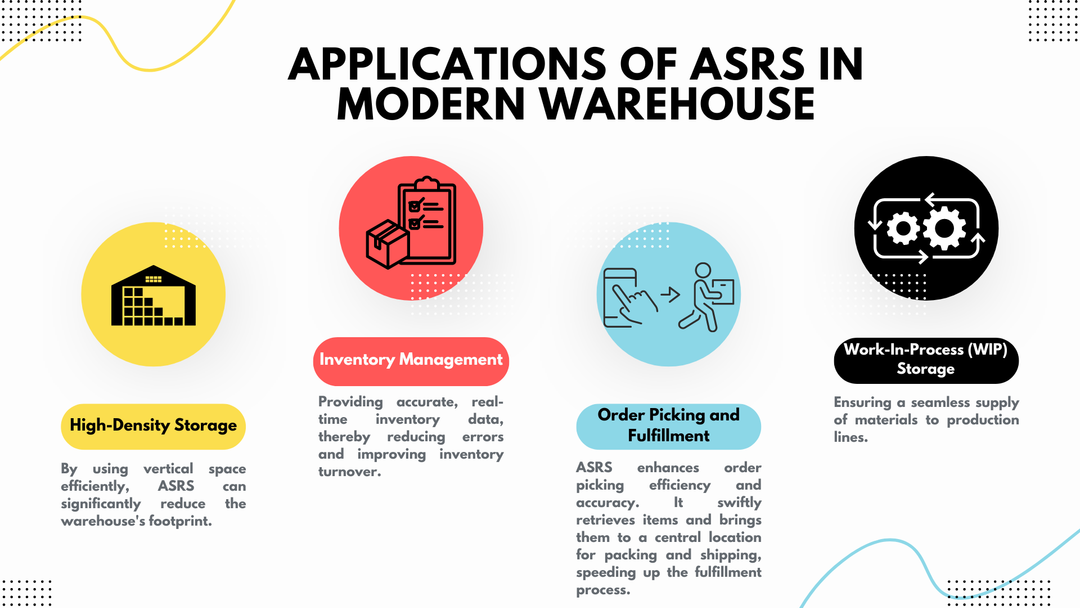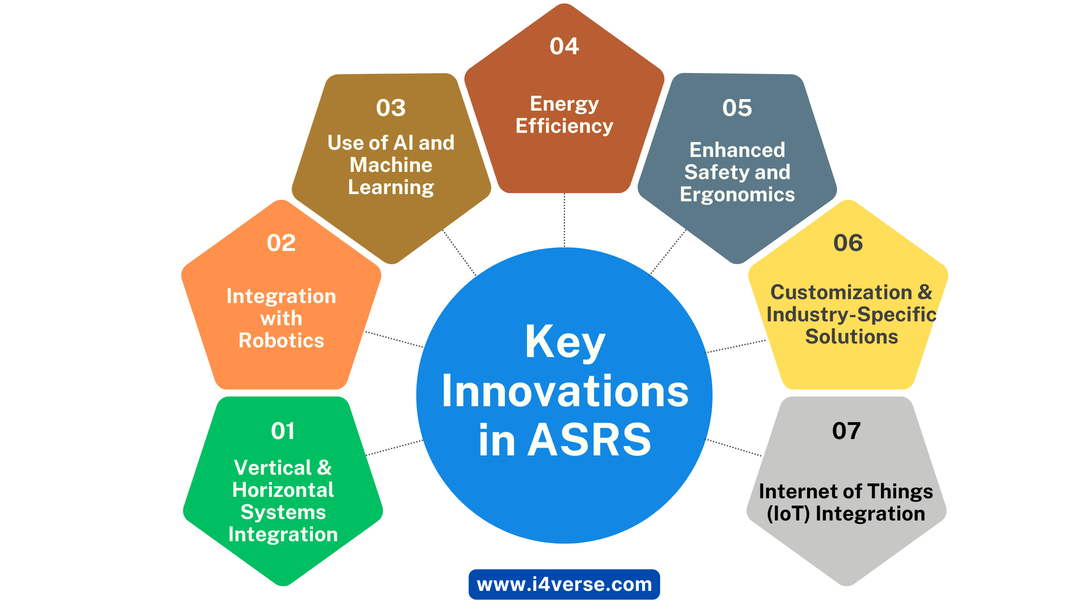
In today’s fast-paced and ever-evolving industrial landscape, efficiency and accuracy are paramount. Enter the Automated Storage and Retrieval System (ASRS), a critical component in modern warehousing that is reshaping how goods are stored and managed. This article delves into the concept of ASRS, its diverse applications, and the innovations that are setting new standards in warehouse operations.
WHAT IS ASRS?
Automated Storage and Retrieval Systems are technologically advanced systems used in warehousing and logistics to automatically place and retrieve loads from defined storage locations. These systems typically consist of various computer-controlled systems for automatically placing and retrieving loads from specific storage racks. ASRS solutions vary widely, from smaller systems handling lightweight bins to massive systems capable of moving thousands of pounds of materials.
Understanding ASRS in Warehouse Management
ASRS is mainly utilized for the organized storage of goods. By maximizing vertical space, these systems allow warehouses to store items up to the ceiling height, greatly optimizing space utilization. They also enhance order fulfillment by automating the retrieval of needed items with precision and speed.
Beyond just storage, ASRS is instrumental in the kitting process, gathering components needed for specific products. It streamlines order consolidation, provides temporary storage, ensures uninterrupted production flow, and integrates seamlessly into manufacturing lines. Additionally, ASRS effectively manages tool and mold storage, component repairs, restocking, and handling of returns.

Diverse Technologies Used in ASRS
ASRS is not a uniform solution; it encompasses various technologies tailored to specific warehouse needs:
- Unit-load ASRS: Ideal for handling large pallets of goods.
- Mini-Load ASRS: Designed for smaller items, handling bins or cartons.
- Carousel Modules: Both vertical and horizontal, these rotating systems allow rapid access to stored items.
- Vertical Lift Modules: Similar to elevators, retrieving items from vertical stacks.
- Vertical Buffer Modules: Compact units for maximizing storage in limited spaces.
- Robotic Cube-based Storage: Utilizes robots for storing items in a 3D grid.
- Floor Robots (AGVs/AMRs): Transport items across warehouse floors.
- Columns of Trays: Employ vertical space for storing items in stacked trays.
- Single Aisle ASRS: Designed for narrow aisles to optimize space use.
- Shuttles: Multi-level systems with shuttle mechanisms for item retrieval.
Key Innovations in ASRS

1. Vertical and Horizontal Systems Integration: Modern ASRS solutions integrate both vertical and horizontal storage strategies, maximizing warehouse space utilization. Vertical Lift Modules (VLMs) and Horizontal Carousels are now seamlessly integrated, allowing for the efficient storage and retrieval of items of varying sizes and weights, thus optimizing the use of warehouse space.
2. Integration with Robotics: The integration of robotics in ASRS, such as robotic arms for picking and placing items, has made these systems more flexible and efficient. Robotic ASRS can handle a wider variety of items, including irregularly shaped or delicate products.
3. Use of AI and Machine Learning: Artificial intelligence and machine learning algorithms are being incorporated into ASRS to optimize storage decisions, predict maintenance needs, and improve system responsiveness.
4. Energy Efficiency: Newer ASRS models are designed with energy efficiency in mind. Systems now come with features like regenerative braking, which recaptures energy, and energy-efficient drives, reducing the overall carbon footprint of warehouse operations.
5. Enhanced Safety and Ergonomics: Safety and ergonomics have been greatly improved in modern ASRS. Automated systems reduce the need for manual handling of goods, thereby minimizing the risk of accidents and injuries. Ergonomically designed interfaces and stations make the interaction with the system more comfortable and safe for operators.
6. Customization and Industry-Specific Solutions: ASRS providers now offer customized solutions tailored to specific industry needs. Whether it’s the high-throughput requirements of e-commerce or the specialized storage needs of pharmaceuticals, ASRS can be customized to meet diverse industry demands.
7. Internet of Things (IoT) Integration: The integration of IoT technology allows for real-time monitoring and control of ASRS. This leads to improved diagnostics, predictive maintenance, and remote troubleshooting capabilities.
Conclusion
The evolution of Automated Storage and Retrieval Systems marks a significant milestone in warehouse management. With its varied applications and ongoing innovations, ASRS is not just a solution for storage and retrieval; it’s a comprehensive approach to efficient, safe, and sustainable warehouse operations. As technology continues to advance, ASRS is poised to become even more integral to the warehousing and logistics sector, driving efficiency and productivity to new heights.